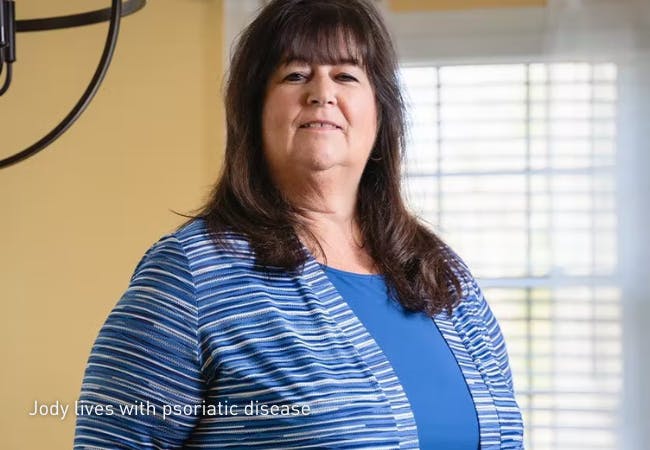Last updated on 6/24/2025 by the National Psoriasis Foundation.
Types of Psoriasis
There are five types of psoriasis.
It is possible to have more than one type of psoriasis at one time and more than one type in a lifetime. Treatments may vary depending on the type and location of the psoriasis.

Guttate Psoriasis
Guttate psoriasis affects roughly 8 percent of people living with psoriasis. Signs of guttate psoriasis include small, round, red or discolored spots caused by inflammation. Guttate psoriasis often appears on the arms, legs, and torso; however, it can affect any area of the body.
Pustular Psoriasis
Pustular psoriasis affects about 3 percent of people living with psoriasis. Symptoms include pustules (white, pus-filled, painful bumps) that may be surrounded by inflamed or reddened/discolored skin. Pustular psoriasis may appear only on certain areas of the body, such as the hands and feet, or it may cover most of the body.
Plaque Psoriasis
Plaque psoriasis is the most common type, affecting up to 80 percent of those with psoriasis. Plaques can appear anywhere on the body as raised patches of inflamed, itchy, and painful skin with scales. For some people, the skin may be red with silvery-white scales. For others, plaques may look more purple. This may depend on the skin type of the individual. These plaques most often appear on the scalp, knees, elbows, and in or around the belly button and lower back. However, it can affect any area of the body.
Inverse Psoriasis
Inverse psoriasis affects one-quarter of people living with psoriasis. Signs of inverse psoriasis include inflamed deep-red or darkened skin that is smooth and not scaly. Inverse psoriasis affects skin folds in the body such as underarms, under breasts, the genital area, and buttocks. It can cause severe itching and pain and can be worsened by sweat and rubbing in these areas.
Erythrodermic Psoriasis
Erythrodermic psoriasis is rare, affecting about two percent of people living with psoriasis. This type of psoriasis can cause intense redness or discoloration and shedding of skin layers in large sheets. It often affects nearly the whole body and can be life-threatening. Other symptoms include severe itching and pain, changes in heart rate and temperature, dehydration, and nail changes. It is important to see a health care provider immediately during an erythrodermic flare.
Image Credit
Guttate image credit: Courtesy of Joel M Gelfand MD
Plaque image credit: Courtesy of Joel M Gelfand MD
Erythrodermic image credit: Wikimedia Common